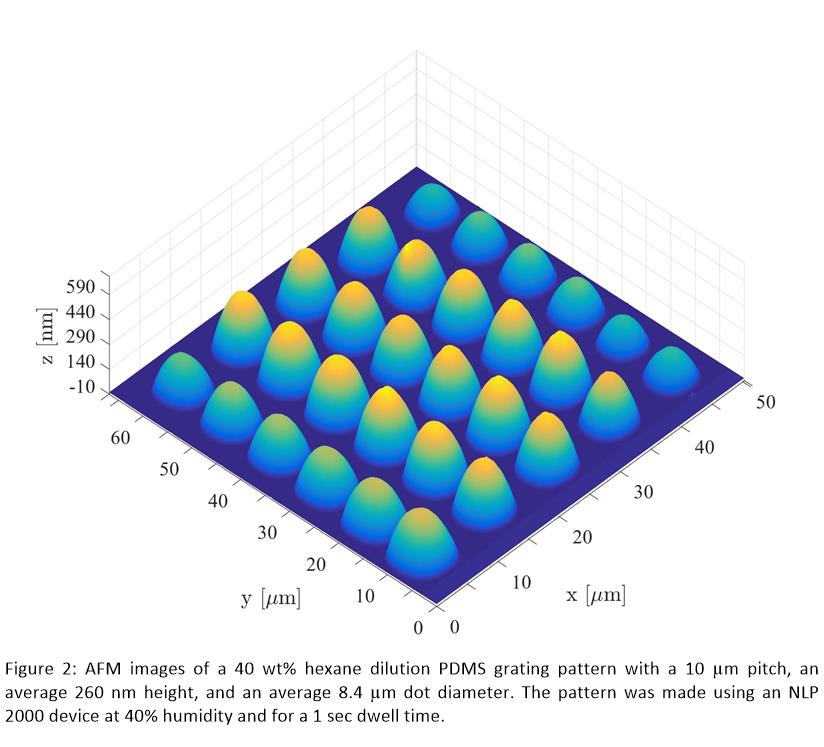
Exploring Poly(Dimethylsiloxane) Ink Solutions for Dot Patterning Using Dip-Pen Nanolithography
Liron Danoch, Electrical and Electronics Engineering, Shamoon College of Engineering, Beer-Sheva, Israel
Matan Fisher, Electrical And Electronics Engineering, Shamoon College Of Engineering, Beer-sheva, Israel
Shimon Zohar, Electrical And Electronics Engineering, Shamoon College Of Engineering, Beer-sheva, Israel
Zeev Fradkin, Electrical And Electronics Engineering, Shamoon College Of Engineering, Ashdod, Israel
Moshe Zohar, Electrical And Electronics Engineering, Shamoon College Of Engineering, Beer-sheva, Israel
Dip-pen nanolithography (DPN) is a low-cost bottom-top versatile method for directly patterning materials on surfaces with sub-50 nm resolution, it involves the use of a cantilever tip to transfer a selected ink onto various surfaces to create dot and line array patterns, which are then bonded irreversibly to the substrate [1-4].
There are many parameters to consider when attempting to utilize DPN due to the direct transfer of materials to the patterning surface and the chemical interaction between them [5].
This work focuses on printing complex patterns of 30 dots [5x6] and 200µm or longer lines over a SiO2 substrate. We have prepared seven different types of Sylgard 184 PDMS based inks diluted with hexane to give varying percentage mixtures (wt%/wt%) and different viscosities. The patterning procedures were performed at a temperature of 23oC, and we examined the effect of the different parameters over the patterning. In addition to the different hexane percentage mixtures, we also observed the effect of humidity and dwell time of the tip on the surface. Overall, we tested three humidity conditions at seven different dwell times of the tip on the surface, with seven different hexane percentages mixtures.
The viscosity and surface tension of each mixture is presented in Table 1. The effect of the humidity conditions was significant mainly at high tip dwell times. We have created a databank which allows the selection of operating conditions and ink types for obtaining the desirable dot diameter and height.
Figure 1 shows several dot patterns obtained at 40% humidity for different hexane percentages and for several dwell times. Figure 2 shows the result for a 30 dot pattern obtained at 40% humidity with 40 wt% hexane dilution and 1 sec dwell time.
Table 1. The measured viscosity and surface tension of the hexane dilutions
|
|
|
|
|
|
|
|
|
|
|
|
|
|
|
|
|
|
|
|
|
|
|
|
.jpg)

.jpg)
Organized & Produced by:

POB 4043, Ness Ziona 70400, Israel
Tel.: +972-8-9313070, Fax: +972-8-9313071
Site: www.bioforum.co.il,
E-mail: bioforum@bioforum.co.il